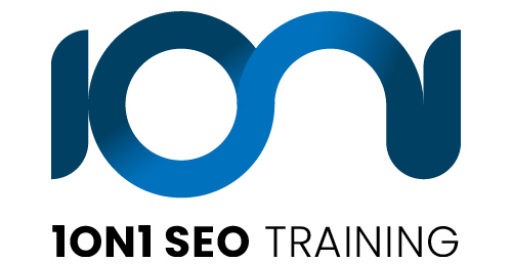If you’ve been online recently, you’ve probably seen headlines screaming that “SEO is dead!” or that “AI is replacing everything.”
Let’s be clear: that’s far from the truth. In reality, AI and the future of SEO are now more connected than ever, and learning how they work together is one of the smartest moves you can make for your business or career.
Whether you’re a website owner, small business, or digital marketer, understanding how to blend SEO and AI will help you adapt, grow, and dominate search rankings, not get left behind.
At 1on1 SEO Training, we believe SEO is evolving, not dying, and with the right SEO coach, you can master the skills to thrive in this AI-driven era.
Table of Contents
- Why Learning SEO Still Matters in the Age of AI
- Understanding the Connection Between AI and the Future of SEO
- How an SEO Coach Helps You Master SEO for AI-Driven Search
- SEO Is Not Dead: Why It’s Evolving with AI
- Learning Through SEO Training: Building Real-World Skills
- How AI Changes Search Behavior and SEO Strategies
- The Benefits of Combining SEO Coaching and AI Tools
- How SEO Helps AI Notice and Rank Your Website
- Practical Ways to Prepare for AI and the Future of SEO
- Learn with Experience: SEO Training with 1on1 SEO Coach
- Your Roadmap to SEO and AI Success
- FAQs About AI and the Future of SEO
Why Learning SEO Still Matters in the Age of AI
Some people think AI is replacing SEO. But here’s the truth: AI and the future of SEO are shaping a new way of doing optimization.
AI doesn’t make SEO irrelevant; it makes it smarter. AI tools can predict user behavior, understand search intent, and analyze content faster, but they still rely on human-created, optimized data to know which websites deserve visibility.
Without SEO, AI won’t even recognize your site as relevant. So, learning SEO today is about learning how to make your website more AI-readable, trustworthy, and authoritative.
Understanding the Connection Between AI and the Future of SEO
To understand where SEO is going, you need to know what’s driving it, and that’s AI.
Artificial intelligence powers tools like Google’s Search Generative Experience (SGE), Bing Copilot, and ChatGPT. These platforms read and summarize web pages to answer user questions.
But they can’t read minds. They depend on SEO signals like structured data, backlinks, and keyword context to identify trustworthy information.
That’s where AI and the future of SEO come together:
AI needs SEO-optimized content to provide accurate, useful results.
How an SEO Coach Helps You Master SEO for AI-Driven Search
Learning SEO on your own can be overwhelming. Between algorithm updates, AI tools, and ranking factors, it’s easy to get lost. That’s where having an SEO coach makes all the difference.
A skilled coach doesn’t just teach you theory; they guide you through practical, real-world SEO strategies that work with AI technology.
When you train with a mentor from 1on1 SEO Training, you’ll learn how to:
- Use AI to analyze keyword intent and ranking patterns
- Write human-sounding, optimized content that AI can understand
- Build site authority and E-E-A-T (Expertise, Experience, Authoritativeness, Trustworthiness)
- Optimize for both Google and AI-powered search platforms
Your SEO training becomes more than just learning tactics, it’s about understanding how search is changing and mastering it confidently.
SEO Is Not Dead: Why It’s Evolving with AI
Let’s debunk one of the biggest myths in digital marketing: SEO is dead.
Far from it! SEO is more alive than ever; it’s just different now. Search engines and AI tools both reward websites that offer value, clarity, and credibility.
Here’s the reality about AI and the future of SEO:
- AI depends on SEO. It can’t “see” your website unless it’s optimized.
- SEO defines structure. AI uses that structure to understand what your content means.
- AI can’t replace human strategy. It needs guidance, and SEO provides it.
So instead of resisting AI, smart marketers learn how to use it through proper SEO training and coaching.
Learning Through SEO Training: Building Real-World Skills
At 1on1 SEO Training, we take a hands-on approach to SEO education. You won’t just memorize definitions, you’ll learn how to apply them in real projects.
We teach you how to balance AI tools with human creativity, how to audit websites for optimization opportunities, and how to interpret search data like a professional SEO expert.
With personalized SEO coaching, you’ll discover how to turn what you learn into measurable growth for your website, your business, or your career.
Because when you understand AI and the future of SEO, you can adapt to any update or algorithm change.
How AI Changes Search Behavior and SEO Strategies
AI has completely transformed how people search. Instead of typing “best SEO tools,” users now ask:
“What are the best SEO tools for small businesses to improve AI rankings?”
That’s called conversational search, and it’s one of the biggest shifts shaping AI and the future of SEO.
AI Learns Context, Not Just Keywords
Search engines now use natural language processing (NLP) to understand intent. That means your content needs to sound natural, written for humans, not robots.
AI Overviews Depend on SEO-Optimized Content
When AI displays a summary at the top of a search result, it’s pulling information from trusted, optimized websites. If your content isn’t optimized, you won’t be part of those summaries.
That’s why you still need SEO, to make sure AI knows who you are and what value you provide.
The Benefits of Combining SEO Coaching and AI Tools
AI tools like ChatGPT, Jasper, and SurferSEO can help speed up research, planning, and analysis. But here’s the secret: they’re only as good as the person using them.
That’s where SEO coaching comes in. A professional coach helps you understand why certain SEO strategies work, how to apply them, and when to let AI assist.
Together, AI tools and an SEO coach help you:
- Save time analyzing keywords and competitors
- Write high-ranking, AI-friendly blog content
- Avoid over-automation and maintain authenticity
- Build SEO confidence with expert feedback
In short, this combination of human guidance and technology prepares you for AI and the future of SEO.
Tip 7: Track Your Progress
It’s easy to feel lost if you’re not tracking how far you’ve come. Whether you’re running a blog or practicing SEO on a test site, make sure you monitor your improvements.
Use tools like Google Search Console or keyword tracking software to see:
- What keywords you’re ranking for
- Which pages are getting traffic
- How users behave on your site
- What keywords you’re ranking for
Tracking not only shows you what’s working, but it also keeps you motivated. Small wins, like moving from page three to page two, are worth celebrating.
Final Thoughts
Going from zero to ranking may seem overwhelming at first, but with the right SEO training and mindset, it’s completely possible. Remember, the goal is progress, not perfection. Every blog you publish, every keyword you research, and every technical fix you apply gets you one step closer to mastering SEO.
The key to success is consistency. Learn, apply, review, and repeat. SEO is not about quick wins, it’s about building long-term value.
Whether you’re doing it for your own business, offering SEO as a service, or simply curious about how the web works, start small and stay curious. With the right training, you’ll be seeing results in no time.
You have not enough Humanizer words left. Upgrade your Surfer plan. Tools




